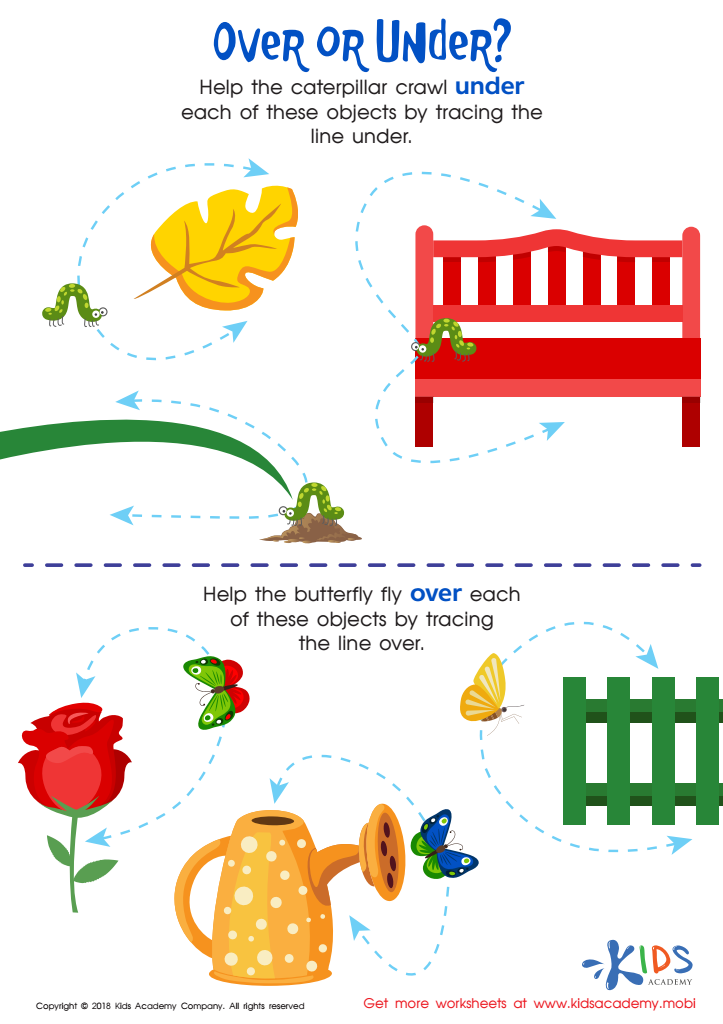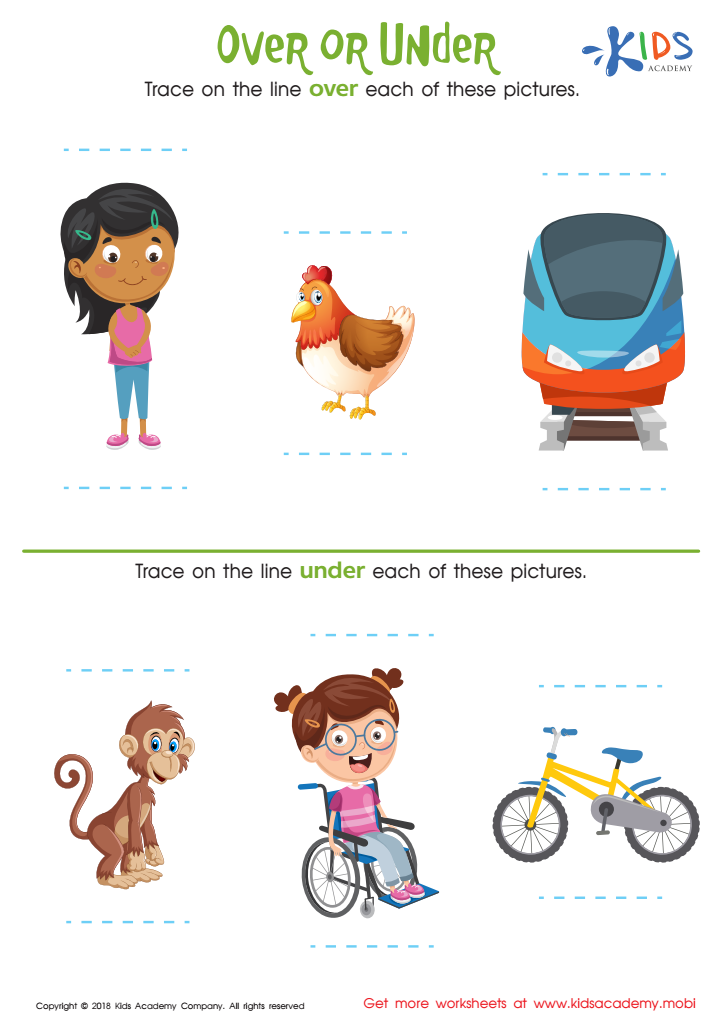Understanding prepositions Normal Geometry Worksheets for Ages 5-7
3 filtered results
-
From - To
Introducing our "Understanding Prepositions Normal Geometry Worksheets for Ages 5-7," designed to make early math learning fun and effective for young minds. These engaging worksheets help children master basic geometry and prepositional phrases while enhancing spatial awareness. Each activity is crafted to simplify the concept of direction and location, making it easier for kids to understand terms like "above," "beneath," "next to," and "behind." Perfect for a classroom or home setting, these worksheets seamlessly combine education and entertainment. Equip your child with essential geometry skills that lay the groundwork for future math success. Download and start learning today!


Over or Under? Worksheet


Over or Under Worksheet


In Front or Behind Worksheet
Understanding prepositions and their spatial relationships form the foundation for early geometry and spatial reasoning skills, which are essential for children aged 5-7. When parents and teachers introduce these concepts, they aren't just teaching children about words or shapes; they're fostering critical thinking and problem-solving skills.
Prepositions such as “above,” “below,” “next to,” and “between” help young children describe and understand their environment. This spatial awareness is crucial not only in everyday tasks but also in grasping early mathematical concepts. Knowing how objects relate in space aids children in arranging items, following directions, and making sense of visual information - essential skills for success in school and beyond.
Early exposure to geometry through simple activities like identifying shapes, sorting objects, or assembling puzzles nurtures a child’s cognitive development. These activities train young minds to recognize patterns, understand dimensions, and appreciate symmetry and order – fundamental principles in advanced math and science.
Moreover, spatial awareness has been linked to improved reading skills. Understanding how letters and words form spatially on a page contributes to better reading comprehension and fluidity.
By focusing on prepositions and basic geometric skills, parents and teachers are setting a solid educational foundation that supports further learning across various disciplines. This early investment aids children in becoming more well-rounded, capable, and confident learners.
 Assign to My Students
Assign to My Students
















